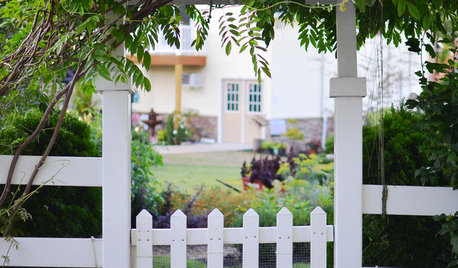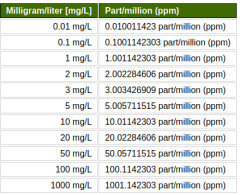Money Tree help
Lisa S
last year
Featured Answer
Sort by:Oldest
Comments (10)
Lisa S
last yearlast modified: last yearRelated Discussions
Something is wrong with my Money Tree... Help appreciated!
Comments (19)Most plants will grow new roots once their pots can drain. That will use a lot of energy, so although it should stop declining, don't be surprised if it takes a while before the the plant starts to look a lot better. My guess is that you weren't checking the soil at the bottom of the pot, which stayed wet enough to kill roots that tried to grow. In the future, break a 3/8" (or thereabouts) dowel in half and sharpen all four ends in a pencil sharpener or with a utility knife. Push the dowel through the soil all the way to the bottom of the pot, wait a few seconds, and don't water until it is completely dry and unstained by soil, at which point there's still plenty of moisture inside the soil particles available to the roots even though it feels dry. Watering without drainage can leave harmful mineral deposits in the soil. Get rid of them by flushing the pot with 10 times its capacity of room temperature R/O water (sold cheaply from supermarket machines). Then fertilize with a solution of something like like Miracle Grow 3:1:2 General Purpose granules until 10-15% of the solution drains from the pot. When I did this to my mineral-strangled ficuses I could almost hear them sign with relief....See MoreMoney tree help?
Comments (5)...try to water when the soil is dry,... How much do you water? (e.g. water until water exits the drainage holes, 1/2 cup, etc.) Ditto with Josh on removing the moss. Have you fertilized? Also, I'm not sure that light by itself causes browning of the tips. Pachiras can take a lot of sun-in fact one person on the forum grows theirs in Florida in full sun and they thrive....See MoreMoney Tree Help
Comments (2)Hi, While I don't grow these & can't advise you on their care, I can share their botanical name & allow you to start searching yourself until someone comes along w/ suggestions. Pachira is its botanical name. Money tree can also refer to another type of plant, so it's preferable to use botanical names once one learns them....See MoreMoney Tree- Help revitalizaing!
Comments (0)I adopted this money tree from a neighbour looking to get rid of it. I’m looking for tips to revitalize and care for it? Some things of note: -Leaves are brown on the end -Looks like there used to be 4 other shoots that have died. Will new shoots ever grow off them? -It’s crooked -Any other tips for sun/water/food appreciated!...See MoreLisa S
last yearlast modified: last yearLisa S
last yeartapla (mid-Michigan, USDA z5b-6a)
last yearlast modified: last yearLisa S
last year
Related Stories

BUDGET DECORATING14 Ways to Make More Money at a Yard Sale — and Have Fun Too
Maximize profits and have a ball selling your old stuff, with these tips to help you plan, advertise and style your yard sale effectively
Full Story
GARDENING GUIDES8 Unthirsty Plants Help You Save Water in Style
Spend less effort and money on your landscape with drought-tolerant and native plants that liven up your yard
Full Story
LIFEMake Money From Your Home While You're Away
New services are making occasionally renting your home easier than ever. Here's what you need to know
Full Story
SELLING YOUR HOUSESave Money on Home Staging and Still Sell Faster
Spend only where it matters on home staging to keep money in your pocket and buyers lined up
Full Story
DECORATING GUIDESLook-Alikes That Save Money Without Skimping on Style
Whether in woodwork, flooring, wall treatments or tile, you can get a luxe effect while spending less
Full Story
WINTER GARDENINGHow to Help Your Trees Weather a Storm
Seeing trees safely through winter storms means choosing the right species, siting them carefully and paying attention during the tempests
Full Story
GREEN DECORATING8 Questions to Help You See Through Green Hype
With the ecofriendly bandwagon picking up some dubious passengers, here's how to tell truly green products and services from the imposters
Full Story
LIFE12 House-Hunting Tips to Help You Make the Right Choice
Stay organized and focused on your quest for a new home, to make the search easier and avoid surprises later
Full Story
BATHROOM WORKBOOKStandard Fixture Dimensions and Measurements for a Primary Bath
Create a luxe bathroom that functions well with these key measurements and layout tips
Full Story










tapla (mid-Michigan, USDA z5b-6a)